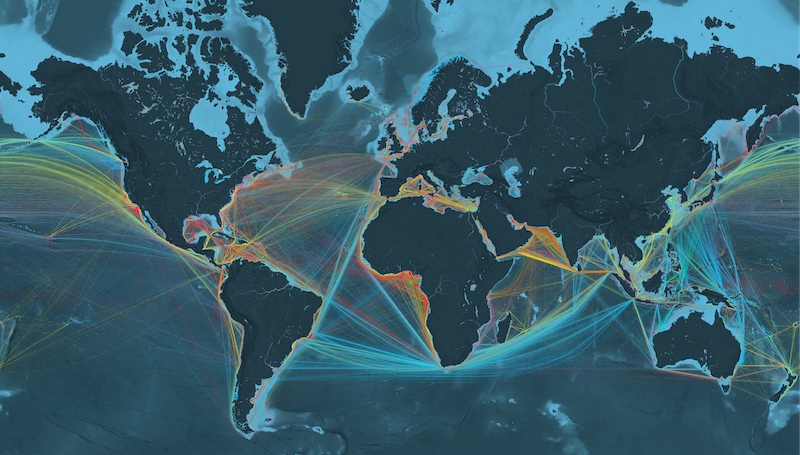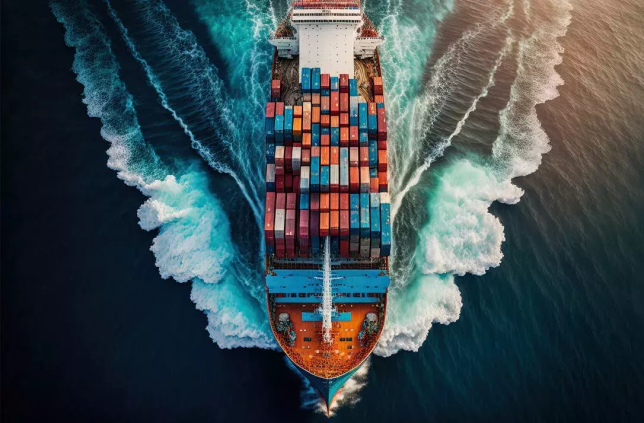Main Container Shipping Routes Busiest Map
We want to talk about the main container shipping line routes busiest map. The main container shipping routes are instrumental in facilitating global trade and the movement of goods between continents. These routes connect major ports across the world, forming vital links in the global supply chain. Understanding these routes and their significance is crucial for businesses involved in international trade and logistics, enabling efficient planning, cost-effective transportation, and reliable delivery of goods. The container shipping industry continues to evolve and adapt to meet the demands of a globalized economy, ensuring the smooth flow of goods across borders and driving economic prosperity.
The Asia-Europe trade lane stands as the busiest container shipping route in the world due to a combination of factors. The robust manufacturing sector in Asia, coupled with the strong consumer market in Europe, drives the continuous flow of goods along this route. The geographical advantage provided by the Suez Canal and the deployment of larger container ships also contribute to the busyness of this trade lane. As global trade continues to expand, it is likely that the Asia-Europe route will maintain its position as the busiest container shipping route for the foreseeable future.
A container shipping routes map showcases the extensive network of trade routes that enable the movement of goods across the globe. It highlights the key ports and regions involved in international trade, emphasizing the interconnectedness of economies worldwide. Understanding these routes is crucial for businesses, logistics providers, and policymakers to optimize supply chains and promote economic growth. As global trade continues to expand, container shipping routes will continue to evolve, adapting to changing demands and market dynamics.
Main container shipping routes
The first part of the article is about the main container shipping routes.
Container shipping is a vital component of international trade, enabling the transportation of goods across long distances. Several main container shipping routes are crucial for global commerce, connecting major ports and facilitating the movement of goods between continents. Here is an overview of some of the key container shipping routes:
Trans-Pacific Route: This route connects ports in East Asia, primarily China, Japan, and South Korea, with ports on the West Coast of North America, such as Los Angeles and Long Beach. It is one of the busiest shipping routes, handling a significant portion of global trade.
Asia-Europe Route: This route links major ports in Asia, including Shanghai, Singapore, and Busan, with ports in Europe, such as Rotterdam, Hamburg, and Felix Stowe. It is an essential trade route for goods moving between Asia and Europe, facilitating the exchange of manufactured goods and raw materials.
Trans-Atlantic Route: This route connects ports in North America, such as New York, Norfolk, and Savannah, with ports in Europe, including Antwerp, Southampton, and Bremerhaven. It enables the transportation of goods and commodities between North America and Europe, supporting various industries and trade sectors.
Intra-Asia Route: This route encompasses shipping routes within Asia, linking ports in different countries and regions within the continent. It facilitates trade between various Asian countries, including China, India, South Korea, and Southeast Asian nations.
Indian Ocean Route: This route connects ports in the Indian Ocean region, including those in the Middle East (Dubai, Jebel Ali), South Asia (Mumbai, Colombo), and East Africa (Mombasa, Durban). It serves as a crucial trade route for goods moving between these regions, supporting economic development and international commerce.
These container shipping routes form the backbone of global trade, enabling the movement of goods between major economic centers. They play a vital role in the global supply chain, supporting various industries, including manufacturing, retail, and energy. Efficient and reliable container shipping routes are essential for ensuring the timely delivery of goods, maintaining supply chain resilience, and fostering economic growth.
Busiest container shipping route
The busiest container shipping route in the world is the Asia-Europe trade lane. This route connects major ports in Asia, such as Shanghai, Singapore, and Hong Kong, with ports in Europe, including Rotterdam, Hamburg, and Antwerp. The Asia-Europe trade lane is a critical link in global trade, facilitating the movement of goods between the manufacturing powerhouse of Asia and the consumer markets of Europe.
Several factors contribute to the popularity and busyness of this shipping route. First and foremost, Asia is the largest manufacturing hub in the world, with countries like China, Japan, and South Korea producing a significant portion of global goods. These products are shipped to Europe, where there is a high demand for consumer goods. The sheer volume of trade between Asia and Europe drives the continuous flow of container ships along this route.
Furthermore, the Asia-Europe trade lane benefits from its geographical advantage. The Suez Canal, a vital waterway linking the Mediterranean Sea with the Red Sea, allows ships to bypass the longer and more hazardous route around the Cape of Good Hope. This shortcut saves time and fuel costs for shipping companies, making the Asia-Europe route even more attractive.
The introduction of larger container ships has also contributed to the busyness of this trade route. Shipping companies are deploying mega-container vessels that can carry thousands of containers at once. These larger ships can handle the high demand for goods transported between Asia and Europe more efficiently, further increasing the traffic along this route.
Container shipping routes map
Container shipping routes span the globe, connecting major ports and facilitating international trade. A map of container shipping routes showcases the intricate network of sea routes that form the backbone of global commerce.
Starting from Asia, the map would depict the busy trade lanes connecting ports like Shanghai, Singapore, and Hong Kong to various destinations across the world. These routes branch out in multiple directions, reaching ports in Europe, North America, South America, Africa, and Oceania. In Europe, ports such as Rotterdam, Hamburg, and Antwerp serve as major hubs for container shipping. From these European ports, routes extend to destinations in North America, South America, and Africa, creating a comprehensive global network.
In North America, ports on the East Coast, such as New York, Norfolk, and Savannah, are linked to ports in Europe and Asia. On the West Coast, ports like Los Angeles, Long Beach, and Vancouver connect to Asia and Oceania. South America has key ports in Santos, Buenos Aires, and Valparaiso that are connected to ports in Europe, North America, and Asia. African ports like Durban, Cape Town, and Lagos connect to trade routes heading to Europe, Asia, and the Americas. Oceania, with ports in Sydney, Melbourne, and Auckland, serves as a connection point between Asia and the Americas.
The map would illustrate the density of shipping routes in certain regions, reflecting the high volume of trade. For example, the Asia-Europe trade lane would be prominent, reflecting its status as the busiest container shipping route. Other busy routes include the Trans-Pacific route connecting Asia and North America, the Trans-Atlantic route connecting Europe and North America, and the Intra-Asian routes connecting various Asian ports.




